Aug . 10, 2025 01:20 Back to list
Durable Wooden Tricycle for Kids | Classic Fun & Safe Ride
The Evolution and Enduring Appeal of Wooden Tricycles for Kids in the Modern Market
In an era increasingly dominated by plastics and synthetic materials, the wooden tricycle for kids stands as a testament to timeless design, sustainability, and developmental efficacy. This comprehensive analysis delves into the intricate facets of wooden tricycles, providing B2B stakeholders, including retailers, educators, and childcare providers, with in-depth insights into their market trends, manufacturing prowess, technical specifications, and strategic advantages. The growing consumer preference for eco-friendly, durable, and aesthetically pleasing children's products has significantly propelled the demand for wooden toys, with tricycles emerging as a prominent category. This surge is not merely a nostalgic resurgence but a reflection of a deeper understanding of sustainable production, child safety, and holistic development. As industry experts, we observe a pronounced shift towards materials that offer longevity, reduce environmental impact, and provide a tactile, natural play experience, contrasting sharply with the often short-lived appeal of mass-produced plastic alternatives. The pedagogical benefits are equally compelling, fostering gross motor skills, balance, and coordination in a naturally stimulating environment.
The global market for children's toys is witnessing robust growth, projected to reach over $120 billion by 2027, with a notable CAGR of approximately 5% in the eco-friendly segment. Within this segment, wooden toys, particularly wheeled vehicles like tricycles, are carving out a significant niche due to their perceived safety, durability, and aesthetic value. This trend is further amplified by increasing parental awareness regarding the environmental footprint of their purchases and a desire to provide children with toys that offer tangible developmental advantages beyond mere entertainment. For businesses seeking to diversify their offerings or establish a competitive edge, understanding the nuances of the wooden tricycle for kids market is paramount. This includes a deep dive into manufacturing integrity, adherence to stringent safety standards, and the capacity for customization to meet varied market demands. Our objective is to furnish you with the critical data, technical specifications, and strategic considerations necessary to navigate this burgeoning market effectively and make informed procurement decisions that align with both commercial objectives and ethical consumer expectations.
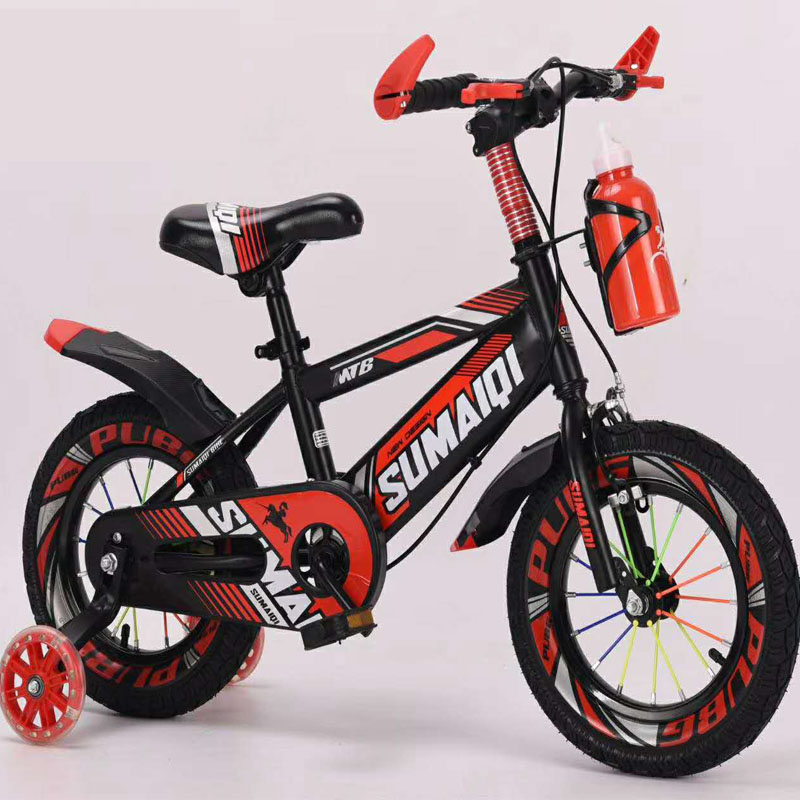
The Art and Science of Wooden Tricycle Manufacturing: A Deep Dive into Craftsmanship
Materials Selection and Procurement for Longevity and Safety
The foundation of a superior wooden tricycle for kids lies in the meticulous selection of raw materials. Primarily, sustainably sourced hardwoods like Baltic Birch plywood, beech, maple, or rubberwood are preferred for their inherent strength, durability, and fine grain. For B2B buyers, verifying Forest Stewardship Council (FSC) certification is crucial, ensuring that the timber originates from responsibly managed forests, aligning with global sustainability goals. These woods possess excellent strength-to-weight ratios and are less prone to splintering or warping compared to softer woods. For instance, Baltic Birch plywood, a material commonly utilized due to its exceptional stability and uniform layers, often comprises 9 to 13 plies for a 1/2-inch thickness, offering remarkable structural integrity. Finishes are equally critical, demanding non-toxic, lead-free, and phthalate-free paints, lacquers, or natural oils (e.g., linseed oil, beeswax) that comply with toy safety standards. Components like wheels might incorporate solid rubber or EVA foam tires over wooden hubs, chosen for quiet operation, floor protection, and enhanced grip. Axles are typically made from robust steel, precision-engineered to ensure smooth rotation and long-term durability.

Precision Manufacturing Processes: From CAD to Assembly
The manufacturing process for a high-quality wooden tricycle for kids integrates both traditional woodworking craftsmanship and modern industrial precision. It typically begins with Computer-Aided Design (CAD) software, where engineers design the tricycle, optimizing for ergonomics, stability, and aesthetic appeal. These designs are then translated into Computer Numerical Control (CNC) machining instructions. CNC routers precisely cut wooden components from large sheets of plywood or solid wood blocks, ensuring exact dimensions, smooth edges, and repeatable quality across batches, which is vital for `wholesale kids tricycle` production. This method significantly reduces human error and waste. Following CNC cutting, components undergo extensive sanding, a crucial step to eliminate splinters and achieve a silky-smooth finish safe for children's delicate skin. This often involves multi-stage sanding with progressively finer grits. Joinery techniques are then employed, ranging from robust mortise and tenon joints for structural integrity to dowel joints or precisely fitted interlocking parts, often reinforced with non-toxic, child-safe adhesives. Finally, the parts are assembled, often using hidden hardware or flush-mounted screws to prevent snagging. For painted or lacquered tricycles, multiple coats are applied with intermediate sanding, ensuring a durable, chip-resistant finish that withstands active play. This multi-layered process, from initial design to final assembly, guarantees a product that is not only visually appealing but also structurally sound and exceptionally safe.
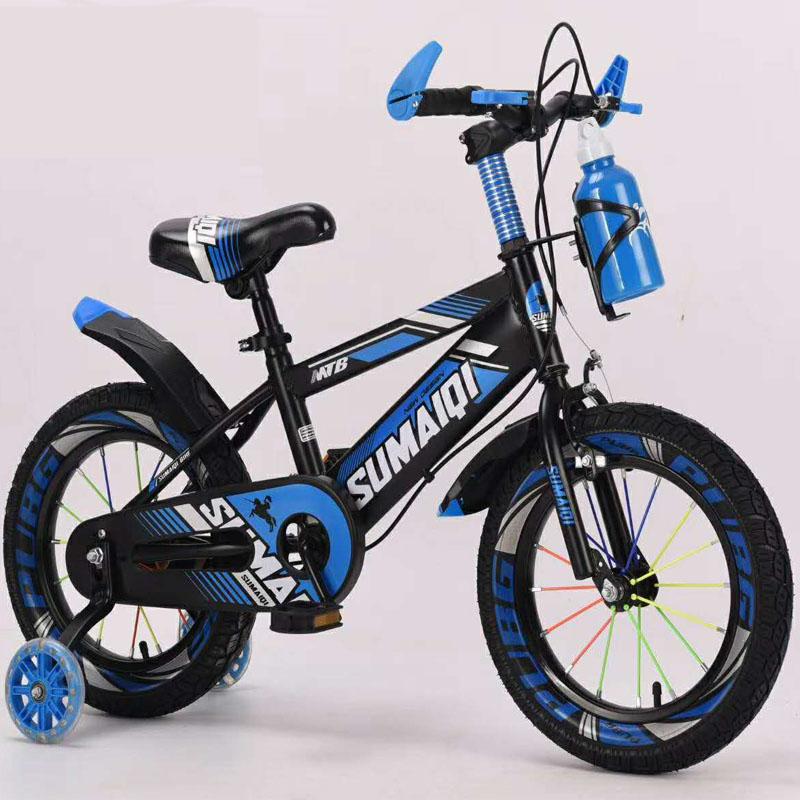
Rigorous Testing and Adherence to Global Safety Standards
Quality control and adherence to international safety standards are non-negotiable for any reputable manufacturer of a wooden tricycle for kids. Key standards include ASTM F963 (Standard Consumer Safety Specification for Toy Safety) in the United States, EN 71 (Safety of Toys) in Europe, and CPSIA (Consumer Product Safety Improvement Act) in the U.S. These standards cover a broad range of safety aspects: mechanical and physical properties (e.g., small parts hazard, sharp points and edges, load-bearing capacity, stability testing, entrapment hazards), flammability, and chemical properties (e.g., heavy metals content in paints and coatings). Manufacturers typically implement a multi-stage inspection process, beginning with raw material inspection, in-process checks at each manufacturing stage (e.g., dimensions, surface smoothness), and final product inspection. Batch testing is common, where samples from each production run undergo laboratory tests to verify compliance with chemical and physical standards. This rigorous testing regimen ensures that the finished product is free from hazardous substances, structurally sound under typical play conditions, and poses no undue risks to children. The service life of a well-constructed wooden tricycle can easily extend for many years, often outliving several plastic counterparts, making them highly cost-effective in institutional settings like daycares and kindergartens, which are key applicable industries for durable `wholesale kids tricycle` solutions. The inherent resilience of wood, when properly treated and assembled, provides superior longevity, minimizing the need for frequent replacements and reducing overall waste.
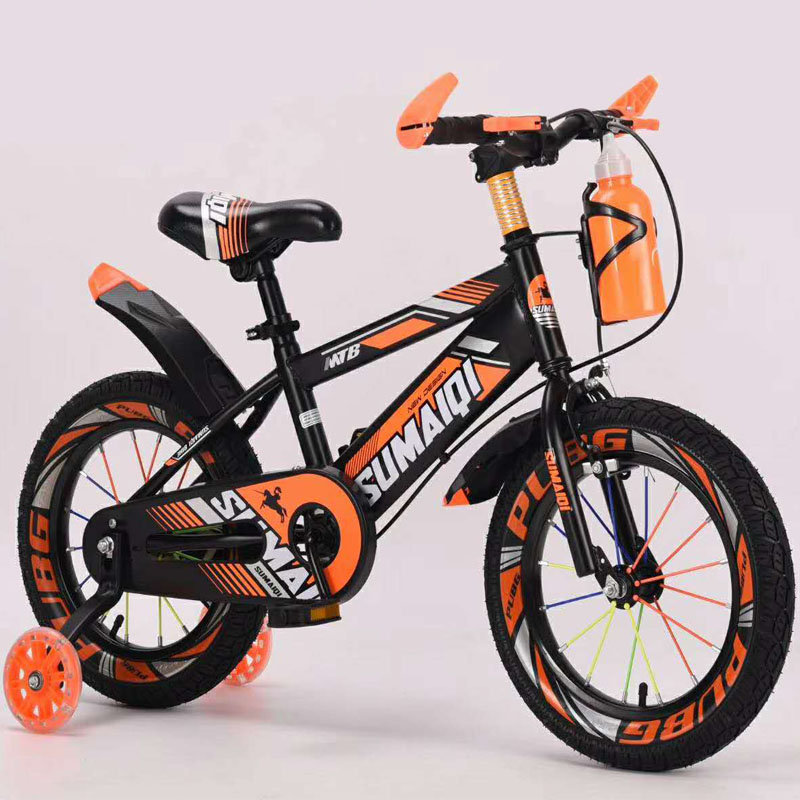
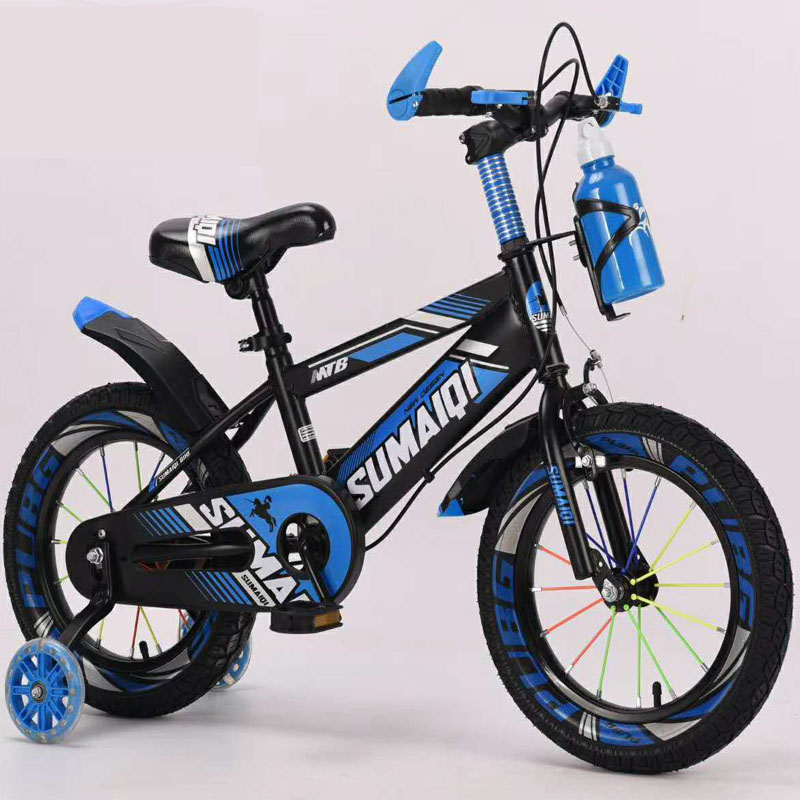
Technical Specifications and Performance Metrics of Premium Wooden Tricycles
For B2B procurement specialists and technical personnel, understanding the precise technical specifications of a wooden tricycle for kids is paramount for evaluating product suitability, performance, and long-term value. Key parameters include dimensions (length, width, height, seat height range), weight, maximum weight capacity, wheel material and diameter, bearing type, and the quality of finishes. For instance, adjustable seat heights are critical to accommodate a broader age range, typically from 1 to 5 years, ensuring ergonomic comfort and safe usage as a child grows. The type of wheel bearings (e.g., sealed ball bearings versus plain bushings) significantly impacts the smoothness of ride and longevity. Sealed ball bearings offer superior rolling efficiency and require less maintenance, making them ideal for high-usage environments like schools or daycare centers. Furthermore, the overall structural integrity is often quantified by load-bearing tests, typically certifying a capacity of up to 50-60 kg (approximately 110-132 lbs), far exceeding the weight of an average child, thus ensuring robust performance even under rigorous use. The design often incorporates a low center of gravity to enhance stability and prevent tipping, a critical safety feature.
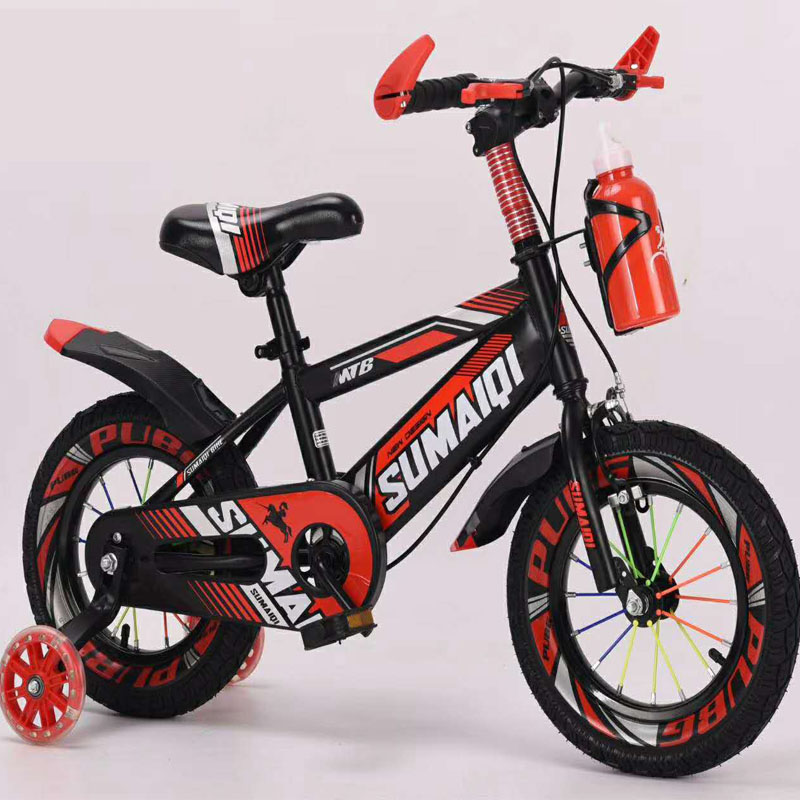
Comparative Analysis: Standard vs. Specialized Wooden Tricycle Models
The market offers a diverse range of wooden tricycle for kids models, from standard single-rider versions to specialized designs like the two seats kids tricycle or those with a vintage kids tricycle aesthetic. Each variant possesses unique performance characteristics tailored to specific needs. A standard model typically focuses on simplicity, durability, and fundamental motor skill development. In contrast, a two seater tricycle for kids is designed for collaborative play, promoting social interaction and shared experiences. These often feature reinforced frames and wider wheelbases to accommodate additional weight and ensure stability. The aesthetic variations, such as a vintage gold kids tricycle or a vintage zenith kids tricycle, prioritize design and heritage, appealing to a segment of the market that values classic appeal and potentially collector's item quality, while still adhering to modern safety standards. The choice between models depends on the intended application, target demographic, and specific developmental or aesthetic goals. Understanding these differentiators allows for strategic inventory planning and targeted marketing efforts within the B2B landscape. Below is a comparative table detailing key parameters across various wooden tricycle types.
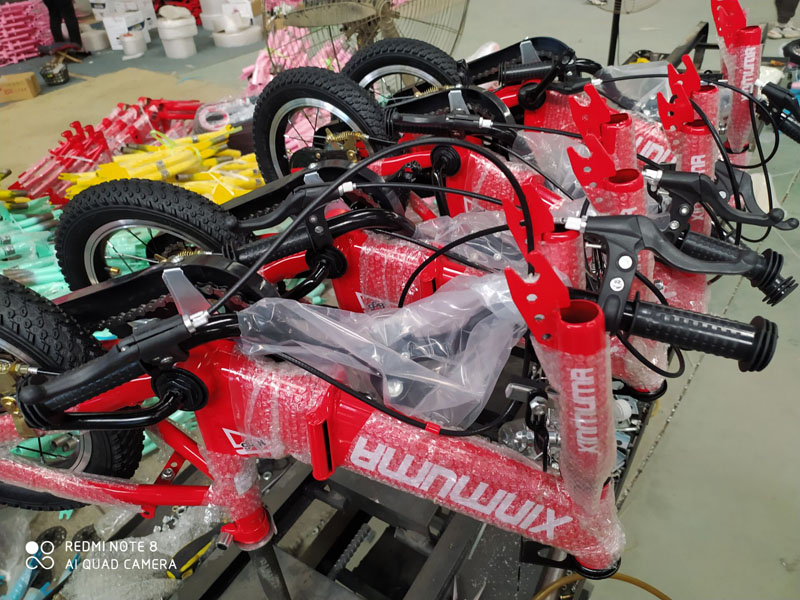

Application Scenarios and Comprehensive Developmental Benefits
The utility of a wooden tricycle for kids extends far beyond mere recreational play; it serves as a critical tool in early childhood development across various environments. In home settings, these tricycles offer a safe and engaging first vehicle, promoting independent mobility within a controlled space. Their robust construction withstands daily use by active toddlers and preschoolers. For commercial applications, such as daycare centers, preschools, and early learning institutions, the durability and ease of maintenance of wooden tricycles make them a preferred choice. Unlike their plastic counterparts, wooden tricycles are less prone to breakage, discoloration, or environmental degradation, ensuring a longer service life even with heavy institutional use. Their natural aesthetic also blends seamlessly into educational environments designed to be stimulating yet calm. Furthermore, in specialty toy retail, wooden tricycles serve as a premium offering, appealing to discerning parents and gift-givers who prioritize quality, safety, and eco-consciousness. The demand for `wholesale kids tricycle` solutions in these sectors is consistently high, driven by the need for reliable, educationally beneficial products.
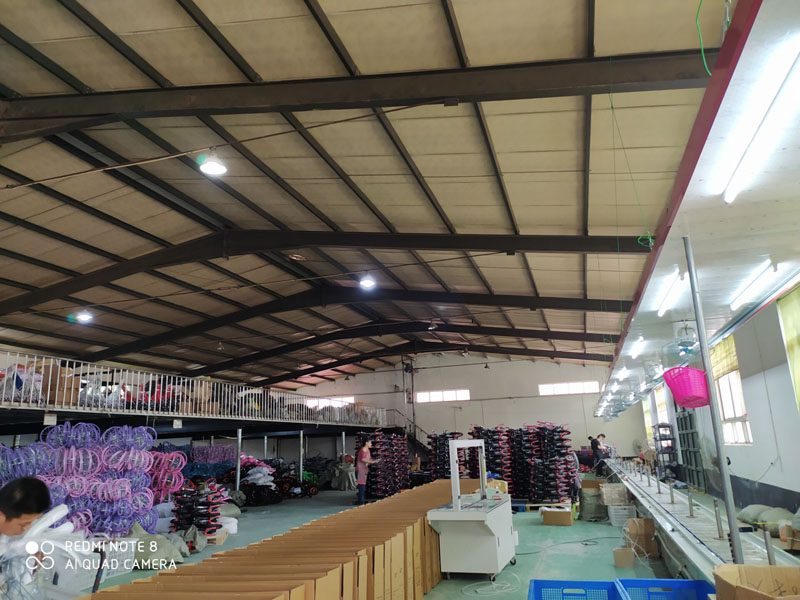
Fostering Physical and Cognitive Development
The act of riding a wooden tricycle for kids is a multifaceted developmental exercise. Primarily, it significantly enhances gross motor skills, including leg strength, coordination, and spatial awareness. Children learn to propel themselves forward, steer around obstacles, and stop, all of which contribute to improved balance and agility. This foundational motor skill development is crucial for transitioning to bicycles later on. Beyond the physical, cognitive benefits are substantial. Riding a tricycle requires planning and problem-solving, such as navigating a path or understanding cause and effect (pedaling makes it move). The sensory experience of natural wood, distinct from cold plastic or metal, also contributes to tactile development. For models like the two seater kids tricycle, social and emotional development comes to the forefront, as children learn to share, cooperate, and communicate while riding together. This collaborative play is invaluable for developing empathy, negotiation skills, and fostering friendships, preparing them for more complex social interactions in school and beyond. The simplicity of wooden toys often encourages more imaginative play, as children are not limited by excessive electronic features, promoting creativity and open-ended exploration.
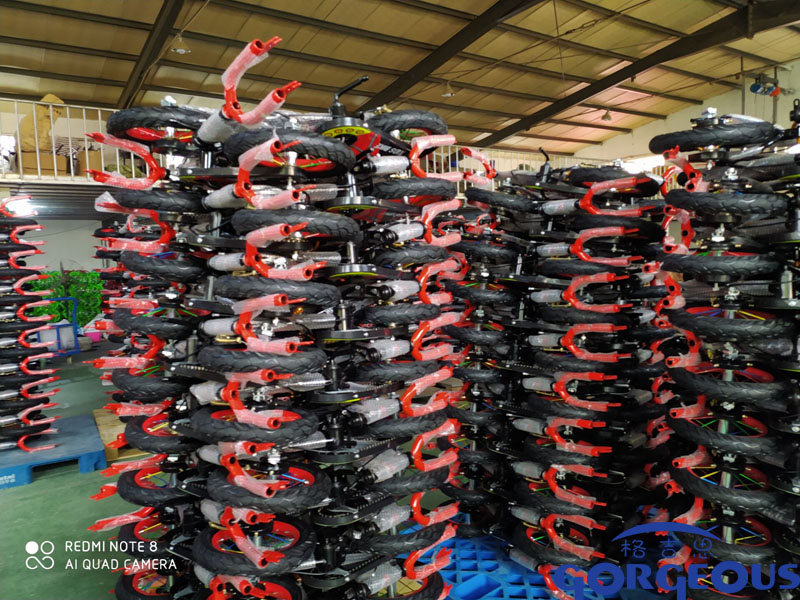
Environmental and Health Advantages
The environmental advantages of opting for a wooden tricycle for kids are profound, especially for B2B entities committed to corporate social responsibility (CSR) and sustainable practices. Wooden tricycles, particularly those made from FSC-certified wood, are inherently more eco-friendly than their plastic counterparts. Wood is a renewable resource, and when responsibly harvested, its production has a significantly lower carbon footprint than petroleum-based plastics. Furthermore, at the end of their exceptionally long life cycle, wooden tricycles are biodegradable or can be recycled, minimizing landfill waste. This contrasts sharply with plastics, which can take hundreds of years to decompose and contribute to microplastic pollution. From a health perspective, wooden toys, particularly those finished with natural, non-toxic substances, pose fewer risks of chemical exposure (e.g., phthalates, BPA) often found in some plastic toys. This makes them a safer choice for children, who frequently interact with toys orally. The tactile experience of natural wood also offers a sensory richness that synthetic materials cannot replicate, contributing to a more wholesome and stimulating play environment for children. These inherent advantages position wooden tricycles as a premium, responsible choice for both consumers and businesses.

Technological Advancements and Innovative Features in Wooden Tricycle Design
While the essence of a wooden tricycle for kids remains its natural appeal and durable construction, modern manufacturing incorporates significant technological advancements to enhance both functionality and user experience. Contemporary designs leverage sophisticated CAD/CAM software to achieve precise ergonomics, ensuring optimal posture and comfort for children across various developmental stages. This includes meticulously calculated seat angles, handlebar reach, and pedal placement (for pedal-equipped models) to support natural body movement and minimize strain. Furthermore, innovations extend to the modularity of components, facilitating easier assembly for end-users and streamlined `wholesale kids tricycle` distribution. Some advanced designs feature adjustable frames or convertible mechanisms, allowing the tricycle to transform into a balance bike or a scooter, effectively extending the product's lifespan and developmental utility. These multi-stage designs represent a significant value proposition for B2B buyers, offering a single product that adapts to a child's growth and evolving motor skills, reducing the need for multiple purchases.

Enhanced Durability Through Advanced Joinery and Finishing Techniques
The structural integrity of a wooden tricycle for kids is paramount for safety and longevity. Modern manufacturing employs advanced joinery techniques that go beyond traditional dowels. This includes CNC-cut interlocking joints, precisely engineered tenons, and mortises that fit together with minimal tolerance, often reinforced with high-strength, non-toxic wood adhesives. These sophisticated joint designs distribute stress evenly across the frame, significantly increasing resistance to impact and torsion, which are common stressors during active play. Moreover, the evolution of finishing technologies contributes significantly to product durability. Multi-layer coating processes, including UV-cured lacquers and natural oil finishes, provide superior resistance to abrasion, moisture, and fading. These finishes are rigorously tested for scratch resistance (e.g., using ASTM D3359 cross-hatch adhesion tests) and chemical resistance (e.g., resistance to common household cleaners or child saliva), ensuring they remain intact and safe over years of use. For products like the vintage kids tricycle or vintage gold kids tricycle, specialized finishing techniques can replicate aged aesthetics while providing modern protective qualities, preventing the degradation typically associated with genuine antique pieces. These technological enhancements ensure that while the material remains natural, the performance meets contemporary demands for resilience and safety.
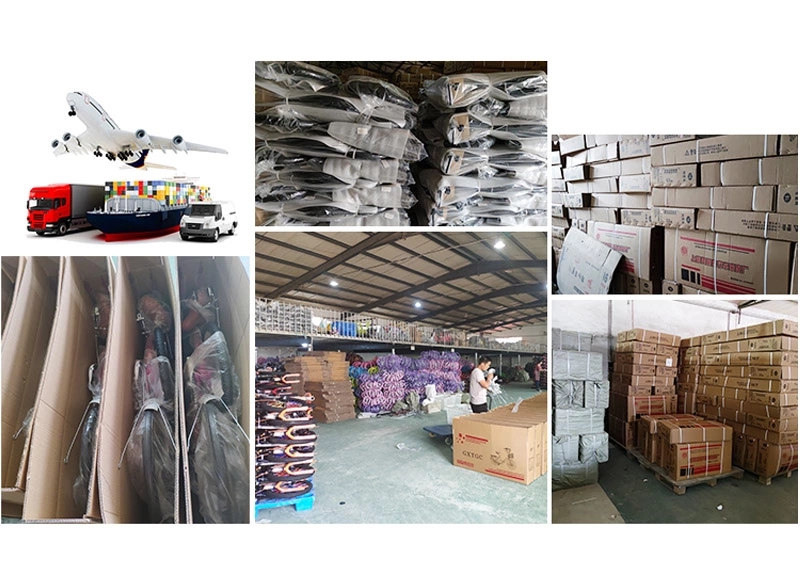
Manufacturer Comparison and Selection Criteria for B2B Buyers
Selecting the right manufacturer for wholesale kids tricycle products is a critical decision for B2B buyers, impacting product quality, supply chain reliability, and ultimately, market reputation. Key factors to consider include the manufacturer's adherence to international safety standards (e.g., ISO 9001 for quality management, ISO 14001 for environmental management, and specific toy safety certifications like CE, ASTM, EN 71, CPSIA), their capacity for production, and their proven track record. A reputable manufacturer will readily provide documentation for material sourcing (e.g., FSC certificates), testing reports, and quality control protocols. Transparency in the supply chain, from raw material procurement to finished product delivery, is a hallmark of a trustworthy partner. Furthermore, assessing their commitment to continuous improvement and innovation, such as integrating new sustainable materials or ergonomic designs, can provide a competitive edge. It is advisable for B2B buyers to request sample products for thorough evaluation of construction quality, finish, and compliance with desired specifications before committing to large orders. Visiting manufacturing facilities, if feasible, provides invaluable insight into their operational excellence and ethical practices.

Customization Solutions for Unique Market Needs
For B2B clients seeking to differentiate their offerings or cater to specific market niches, the ability to access robust Original Equipment Manufacturer (OEM) and Original Design Manufacturer (ODM) services is invaluable. Leading manufacturers of wooden tricycle for kids often provide comprehensive customization options. This can range from branding (logo engraving or painting), specific color palettes to match a brand identity (e.g., unique finishes for a vintage gold kids tricycle collection), or even fundamental design modifications. For instance, a daycare chain might require a slightly lower seat height for younger children or a different wheel configuration for indoor-only use. A specialized retail boutique might seek a bespoke vintage zenith kids tricycle design with unique aesthetic elements and premium wood types. ODM services can involve developing entirely new tricycle models based on client specifications, from initial concept sketches and 3D modeling to prototyping and mass production. This level of customization allows businesses to create proprietary products that resonate deeply with their target audience, enhance brand recognition, and capture specific market segments, thereby maximizing profitability and market penetration. These services typically involve a collaborative design process, ensuring the final product meets both functional requirements and aesthetic aspirations.

Real-World Application Cases and Success Stories
Case Study: Eco-Conscious Daycare Chain Adoption
A prominent national daycare chain, committed to sustainable practices and holistic child development, recently undertook a significant upgrade of its indoor and outdoor play equipment, with a specific focus on replacing plastic tricycles with durable wooden tricycle for kids models. Their decision was driven by several factors: the desire to reduce their environmental footprint, improve the sensory experience for children, and invest in equipment known for its longevity and safety. After extensive market research and evaluation of various manufacturers, they partnered with a supplier known for FSC-certified wood products and adherence to rigorous safety standards. The chain opted for a mixed fleet, including standard single-seat models and several two seat tricycle kids for collaborative play. Post-implementation data showed a remarkable increase in equipment lifespan, reducing replacement costs by an estimated 40% over three years compared to their previous plastic inventory. Teachers reported enhanced engagement during play sessions, with children showing greater creativity and cooperative behaviors. This successful transition underscores the economic and developmental benefits of investing in high-quality wooden tricycles for large-scale institutional use, validating the premium perceived value of these products in a practical, high-traffic environment.
Retail Success: Curating a Premium Toy Collection
"The Little Acorn," a boutique children's store specializing in heirloom-quality toys and sustainable goods, saw a significant boost in sales and customer loyalty after curating a collection of premium wooden tricycle for kids. Their previous inventory, predominantly plastic, often led to customer complaints regarding durability and environmental concerns. By strategically partnering with a manufacturer offering customizable options, "The Little Acorn" launched an exclusive line featuring unique colorways and a distinct vintage kids tricycle aesthetic, including bespoke vintage gold kids tricycle models. Marketing efforts highlighted the craftsmanship, non-toxic materials, and the timeless appeal, resonating strongly with their target demographic of environmentally conscious, affluent parents. Customer feedback frequently praised the robust construction and aesthetic beauty, leading to repeat purchases and strong word-of-mouth referrals. The introduction of these premium wooden tricycles not only elevated the store's brand image but also resulted in a 25% increase in average transaction value for the wheeled toy category within the first year, demonstrating that strategic investment in high-quality, sustainably produced wooden toys can yield substantial commercial returns in niche retail markets.
Ensuring Quality and Trust: Standards, Certifications, and Support
In the B2B landscape for children's products, trust is built upon a foundation of verifiable quality, stringent safety compliance, and robust customer support. When sourcing a wooden tricycle for kids, look for manufacturers who transparently provide evidence of adherence to global toy safety standards such as ASTM F963 (USA), EN 71 (EU), and the Consumer Product Safety Improvement Act (CPSIA). Beyond product-specific certifications, also verify broader quality management system certifications like ISO 9001, which signifies a commitment to consistent quality across all operational facets, from design and production to distribution and customer service. Environmental certifications, such as FSC (Forest Stewardship Council) for wood sourcing, further solidify a manufacturer's commitment to responsible and sustainable practices. A manufacturer with these credentials demonstrates not only product reliability but also ethical corporate governance.
Warranty and After-Sales Support
A crucial indicator of manufacturer confidence in their wooden tricycle for kids products is the provision of a comprehensive warranty. Reputable suppliers typically offer a warranty period of 1 to 3 years covering manufacturing defects, ensuring peace of mind for B2B buyers investing in bulk. Beyond warranty, assess the manufacturer's after-sales support capabilities. This includes readily available spare parts (e.g., wheels, axles, small fasteners), clear assembly instructions for end-users, and responsive technical support for any queries or issues that may arise. For `wholesale kids tricycle` orders, clear communication channels and dedicated account managers are essential for streamlined processes and efficient problem resolution. Prompt and effective customer support enhances user satisfaction and strengthens the long-term partnership between buyer and supplier. This commitment to ongoing support significantly enhances the trustworthiness of a manufacturer, signaling their dedication not just to selling a product, but to ensuring its reliable performance throughout its intended lifespan.
Delivery Logistics and Timelines
Efficient logistics and predictable delivery timelines are paramount for B2B operations, particularly for `wholesale kids tricycle` orders. Discuss lead times, minimum order quantities (MOQs), and shipping options (FOB, CIF, DDP) with potential manufacturers. Leading manufacturers usually provide clear production schedules and can offer expedited shipping options for urgent requirements. Understanding their packaging protocols is also important; products should be securely packed to prevent damage during transit, minimizing returns and ensuring product integrity upon arrival. Many manufacturers also offer bulk packaging or retail-ready packaging solutions depending on the client's needs. A reliable manufacturer will provide real-time tracking information and proactive communication regarding any potential delays, allowing buyers to manage their inventory and distribution effectively. This operational transparency is a key component of building a reliable and trustworthy supply chain, crucial for sustained business success in the competitive children's toy market.
Frequently Asked Questions (FAQ) About Wooden Tricycles
Q1: What are the primary advantages of a wooden tricycle for kids over plastic or metal tricycles?
A1: Wooden tricycles offer several key advantages. They are inherently more environmentally friendly, utilizing renewable resources (FSC-certified wood) and being biodegradable at the end of their long lifespan. From a safety perspective, they are typically finished with non-toxic, child-safe paints and lacquers, reducing exposure to harmful chemicals often found in some plastics. Aesthetically, wooden tricycles possess a timeless charm and a natural, tactile feel that synthetic materials cannot replicate. Functionally, well-constructed wooden tricycles are known for their exceptional durability and stability, often outlasting plastic alternatives due to the inherent strength and resilience of solid wood. They also tend to be quieter in operation and less prone to tipping, enhancing the safety and play experience for children. Their robust construction and classic design also mean they are less likely to break or become obsolete quickly, offering better long-term value.
Q2: What age range is suitable for a wooden tricycle for kids, and do they accommodate growth?
A2: Most wooden tricycle for kids models are designed for toddlers and preschoolers, typically suitable for children aged 18 months to 4 or 5 years. Many modern designs incorporate adjustable seat heights, often with multiple positions, to accommodate a child's growth. This adjustability ensures an ergonomic fit as the child develops, allowing them to use the tricycle comfortably and safely for an extended period. Some innovative models are even convertible, transforming into balance bikes or scooters, further extending their utility and value as a child grows beyond the typical tricycle stage. When selecting a model, it is crucial to check the specific manufacturer's recommended age and weight limits to ensure optimal safety and fit.
Q3: How durable are wooden tricycles, and what is their typical service life in commercial settings (e.g., daycares)?
A3: High-quality wooden tricycle for kids are exceptionally durable, designed to withstand rigorous use in both home and commercial environments. Manufacturers use robust hardwoods like birch plywood or beech, often with reinforced joinery (e.g., mortise and tenon, interlocking CNC-cut joints) and non-toxic, chip-resistant finishes. In commercial settings like daycares or preschools, where equipment experiences daily, heavy use, a well-made wooden tricycle can easily last for 5-10 years or even longer with proper maintenance. This contrasts favorably with many plastic tricycles, which often show signs of wear, fading, or breakage within 1-3 years. Their longevity translates into a lower total cost of ownership for institutions and a reduced environmental footprint due to less frequent replacement.
Q4: What safety certifications should I look for when purchasing wholesale kids tricycle?
A4: For B2B purchasers of wholesale kids tricycle, verifying safety certifications is paramount. Key international standards include ASTM F963 (American Society for Testing and Materials) for the United States, EN 71 (European Standard for Toy Safety) for Europe, and CPSIA (Consumer Product Safety Improvement Act) in the U.S. Additionally, look for the CE mark, indicating compliance with European health, safety, and environmental protection standards. Beyond product-specific certifications, manufacturers holding ISO 9001 (Quality Management System) certification demonstrate a comprehensive commitment to quality control throughout their production process. For wooden products, FSC (Forest Stewardship Council) certification indicates responsible forestry practices. Always request documentation and test reports from the manufacturer to ensure full compliance.
Q5: Are there options for customized wooden tricycle for kids designs for bulk orders?
A5: Absolutely. Many leading manufacturers offer extensive customization options for wholesale kids tricycle orders through OEM (Original Equipment Manufacturer) and ODM (Original Design Manufacturer) services. This allows B2B clients to tailor products to their specific brand requirements or market niches. Customization can include applying specific logos or branding, selecting unique color palettes (e.g., for a vintage gold kids tricycle line), adjusting dimensions, or incorporating special features like unique seating arrangements (e.g., for a two seater kids tricycle with specific requirements). For significant bulk orders, manufacturers may also offer the development of entirely new models from scratch, based on detailed design specifications provided by the client. This flexibility enables businesses to create truly unique and proprietary products that stand out in the market.
Conclusion
The market for wooden tricycle for kids represents a compelling opportunity for B2B stakeholders seeking to align with growing consumer demands for sustainable, safe, and developmentally beneficial children's products. From the meticulous selection of FSC-certified hardwoods and advanced manufacturing techniques like CNC precision, to rigorous adherence to international safety standards (ASTM F963, EN 71, CPSIA), the production of these tricycles embodies a commitment to quality and longevity. Their inherent durability, non-toxic finishes, and aesthetic appeal make them ideal for diverse applications, ranging from home use to high-traffic educational and commercial environments like daycares and specialty retail stores. The developmental benefits are profound, fostering essential gross motor skills, balance, coordination, and even social interaction with models like the two seats kids tricycle.
Furthermore, the increasing availability of sophisticated customization options through OEM and ODM services allows businesses to develop unique product lines, whether that involves a distinctive vintage zenith kids tricycle aesthetic or specific functional modifications for `wholesale kids tricycle` solutions. As the demand for eco-conscious and high-quality children's products continues its upward trajectory, investing in wooden tricycles is not just a commercial decision but a commitment to sustainable practices and the holistic well-being of young children. For B2B buyers, understanding these technical details, market trends, and manufacturer capabilities is crucial for making informed procurement decisions that will yield long-term benefits in terms of profitability, brand reputation, and positive societal impact. The enduring appeal of wood, combined with modern engineering and safety protocols, positions wooden tricycles as a smart, sustainable, and highly desirable asset in any children's product portfolio.
-
The Essential Guide to 16 Inch Child's Bikes – Safety, Specs & Trends
NewsNov.24,2025
-
Kids Road Bike 24 – Lightweight, Safe, and Perfect for Young Cyclists
NewsNov.23,2025
-
Discover Safe and Fun Children's Bikes 14 Inch | Durable Kids' Bikes Reviewed
NewsNov.22,2025
-
Discover the Perfect Little Girl 16 Inch Bike – Safety, Style & Performance
NewsNov.22,2025
-
The Ultimate Guide to 12 Kids Bicycles – Safety, Trends & Top Picks
NewsNov.21,2025
-
14 Inch Children’s Bikes: A Guide to Safety, Durability & Global Impact
NewsNov.20,2025
